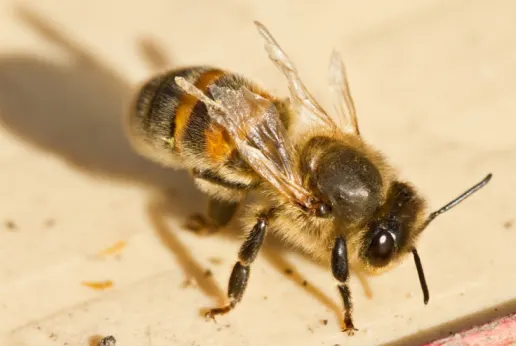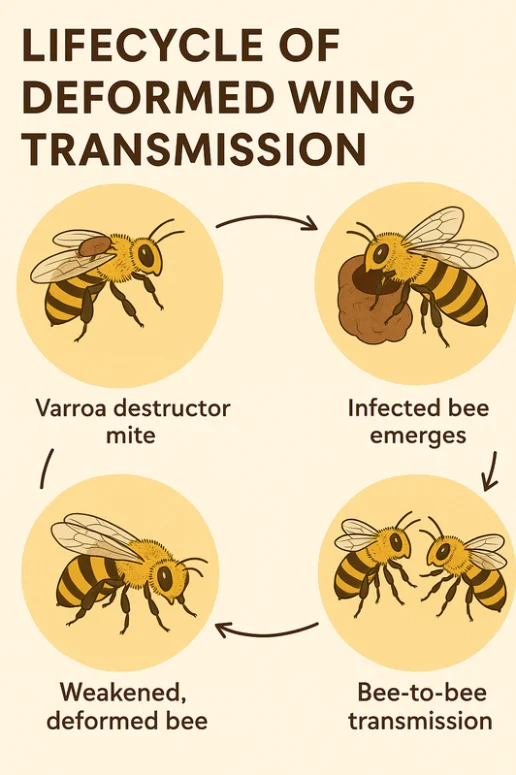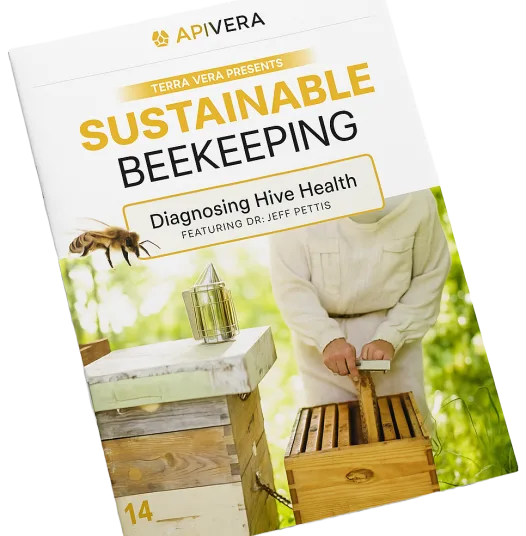


In the wake of the 2025 colony loss crisis, one name keeps resurfacing: Deformed Wing Virus (DWV). As confirmed by USDA researchers, DWV—particularly types A and B—played a leading role in the most devastating U.S. honey bee die-off on record, wiping out over 60% of colonies nationwide.
But what exactly is DWV, and why is it so dangerous?
What is Deformed Wing Virus?
DWV is a highly prevalent and destructive pathogen that affects honey bees, especially when transmitted by the Varroa destructor mite. Infected bees often emerge with visibly deformed wings, shortened abdomens, and impaired motor function—rendering them unable to forage or contribute to the hive. In severe outbreaks, entire colonies can collapse within weeks.
Why DWV Is Getting Worse
The real problem isn’t just DWV—it’s how it’s spreading.
- Amitraz-resistant mites are making traditional miticides less effective.
- These resistant mites now transmit DWV at higher viral loads, making infections more lethal.
- Once inside the hive, DWV spreads from bee to bee through feeding and close contact—creating a chain reaction of infection.
USDA scientists recently confirmed that DWV-B is now more common than DWV-A in many hives, and in high concentrations, both strains can cause rapid colony failure.
How ApiVera Helps Combat DWV
At ApiVera, we take a multi-pronged approach to reduce DWV's impact—targeting both the source (Varroa mites) and the hive’s resilience to viral stress.
1. Control the Vector
Our amino acid-based treatments reduce Varroa mite loads without harsh chemicals—limiting the vector responsible for transmitting DWV in the first place. Unlike amitraz, which mites have grown resistant to, our treatments use a different mode of action that bypasses common resistance pathways.
2. Build Hive Immunity
ApiVera’s nutrient formulations support overall hive health, boosting bees’ natural defenses. Healthier bees are better equipped to manage viral infections and recover from DWV exposure—even in colonies where mites are already present.
3. Fogging Technology for Even Application
Our proprietary fogger ensures consistent, low-stress application across all frames and bees. This helps treat infected hives proactively—reducing stress while delivering therapeutic compounds directly to where they’re needed.
4. Sterilization of Hive Surfaces
ApiVera’s oxidant-based treatments can also be used to sanitize hive surfaces and equipment—helping eliminate residual viruses, bacteria, and fungi. This step is crucial when managing outbreaks like DWV. Surface sterilization reduces the pathogen load inside the hive and gives the next generation of bees a healthier environment to thrive in.
Looking Ahead
DWV isn’t going away. But with smarter tools and better prevention, we can keep colonies productive and resilient—even in the face of emerging viral threats.
ApiVera is committed to working with commercial beekeepers, researchers, and field partners to stay ahead of DWV and its devastating consequences. If your apiary is battling DWV or struggling with Varroa resistance, let’s talk.
Explore solutions to fight DWV and Varroa: terravera.com/beekeepers.
